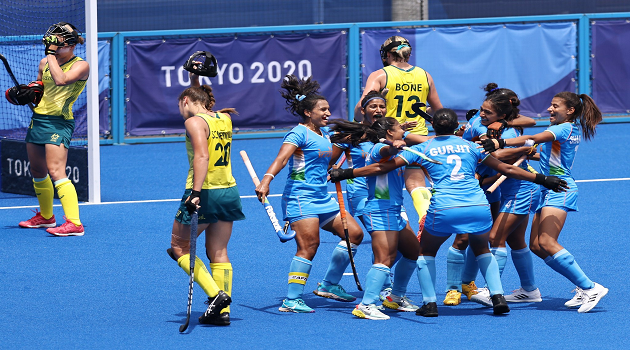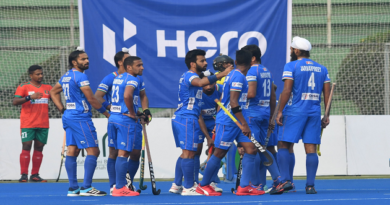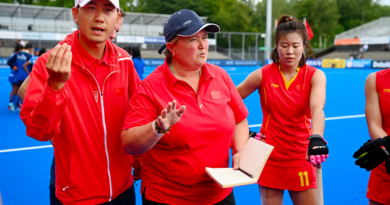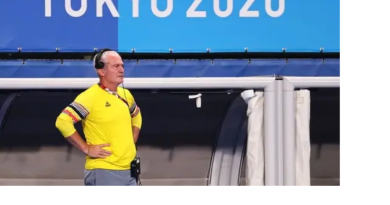Indian Girls’ Fitness Levels On Par With World’s Top Teams: Wayne Lombard
The Indian women’s hockey team’s 4th place finish at the Tokyo Olympics is seen nothing short of a podium finish. Among the many positives that stood out was the high fitness levels of our girls. And one man who has been principally responsible for the significant improvement in fitness levels is the Indian women’s team Scientific Advisor Wayne Lombard, who is exiting the national team after close to a five-year stint.
Hockey Passion caught up with the outgoing Indian women hockey team Scientific Advisor to understand how he went about building the Indian eves into a fighting fit unit.
Excerpts:
Indian hockey eves weren’t exposed to the kind of training needed at the international level when you took charge in 2017. Give us a perspective about how you started your role as Scientific Advisor?
It’s always a challenge when you start a new position as you want to dive in head first and make all the changes possible. But with experience, you start to understand that initially, you need to take a step back and observe what processes are currently working and what might need adjusting. As it turned out, a fair amount need changing, but it needed time and a progressive approach rather than all in all at once.
We basically need to understand the demands of the sport at the highest level, the demands of each position, understand the current physical profile of a team and individuals in the team (and their respective positions). And then start working backwards from there. This enables us to get an idea of how far off we might be from where we need to be and then design the plan of action (periodisation) to ensure we can meet these international-level physical characteristics.
Teams like the Netherlands, Australia, Argentina, New Zealand, are not just super-fit but strong as well. How did you prepare our girls so that they can match these teams?
To compete on pure strength and size is always going to be difficult for the Indian team. So, I focused on our strengths. The line of thought was that if we could be the fittest team on the pitch, coupled with the ability to move well (speed and agility) we could compete with anyone. This is not to say strength was not a focal point, but to compete on size was not going to be possible. But we could be fitter and fast than other teams, and that would level the playing field to a greater degree.
There is a lot of talk around yo-yo test numbers of our women hockey players – can you give us an insight into how much progress our girls made since 2017?
I think yo-yo numbers are sometimes over-emphasized. I have never been a fan of ‘chasing numbers’ and primarily used testing results to help me understand, where we were at and what we needed to work on. We witnessed huge improvements all around. But looking at the yoyo specifically, our 2017 average started off around 17, in 2021 it’s between 19-20 with a highest individual score of 22.
What’s your take on recovery management after teams play in sapping heat and humidity or back-to-back matches?
This is huge and often neglected in India. Just like we periodise training we need to periodise recovery strategies. However, I still feel the best recovery strategy is ensuring players are robust or resilient enough to cope with the demands. If you get this right half the battle is won already. A primary aim before Tokyo Olympics was to ensure we were exposed to the demands we may be presented with, for instance, 8 games in 13 days. We also had to factor in the heat and humidity. Just to give you some insight, at half time in our bronze medal match, the temperature touched 45 degrees with 70% humidity.
We needed to ensure we periodised the ‘right’ recovery strategies at the right times. Some of the strategies included ice baths, passive heat exposure for when temperature did not reach our desired range in training (steam/sauna), nutrition, sleep strategies (avoidance of blue light from mobile phones, correct room temps, etc), recovery pumps, massage, active recovery to name a few.
How tough was it for our girls to stay on a healthy diet and stay away from spicy or junk food stuff?
Over the years it’s been an education and buy-in process. Once athletes understand what’s “good” for them and you empower them to make certain decisions themselves, these things take care of themself.
How would you rate our women team’s fitness levels teams like Australia, Netherlands, Argentina and New Zealand?
It’s difficult to say, as I don’t have access to other teams’ data unless it’s been published in the scientific literature. But I would be bold enough to say at the very least on par.
Coaches and support teams come and go – how would you like to be remembered for your five-year stint as a Scientific Advisor?
I would like to be remembered as someone who put the human being side of the athlete first, and someone who has empowered the players to make decisions themselves through an ongoing education process. It’s important to remember that athletes don’t really worry about how much you know until they know how much you care.
What are your future plans?
Nothing set in stone at the moment. I’m in the final stages of my Ph.D. examination and so will focus on that, and also spend some time with the family. I have lived outside of South Africa since 2015; so it will be good to get back for a couple of months.




